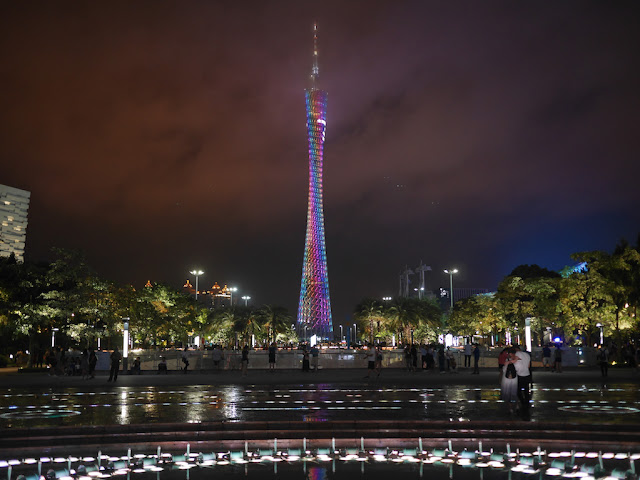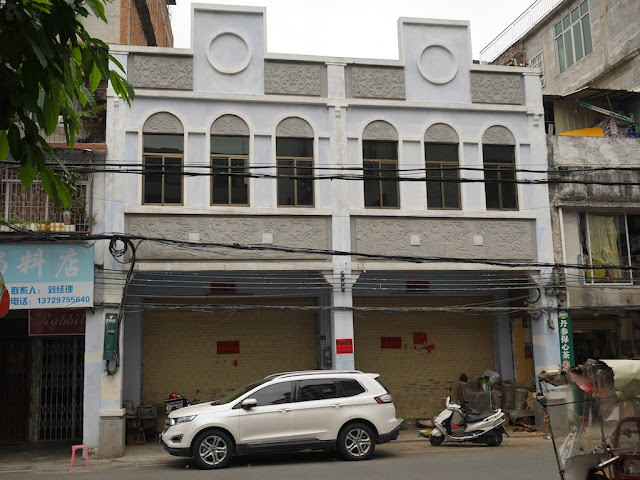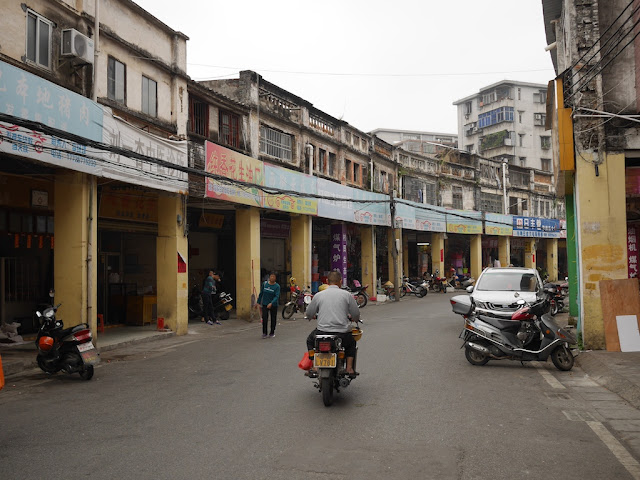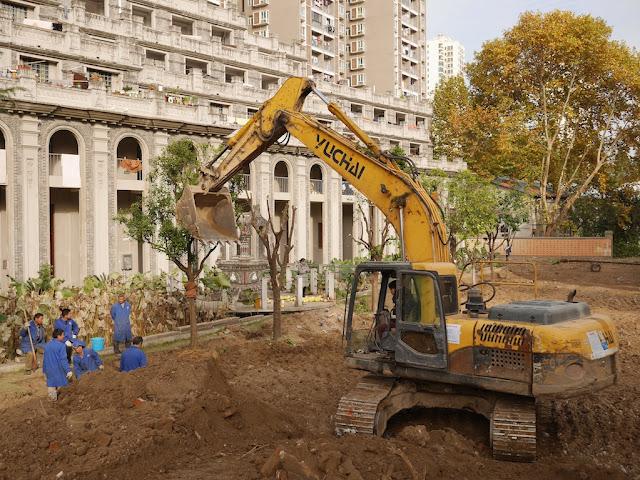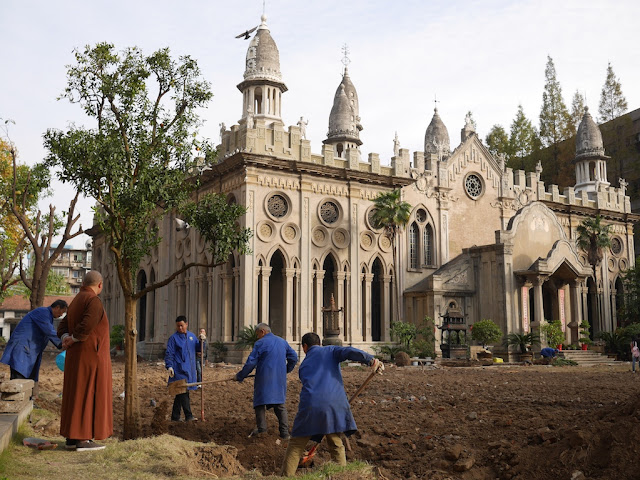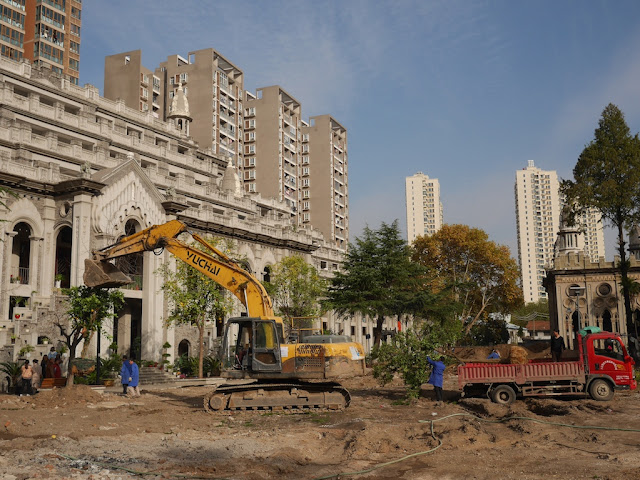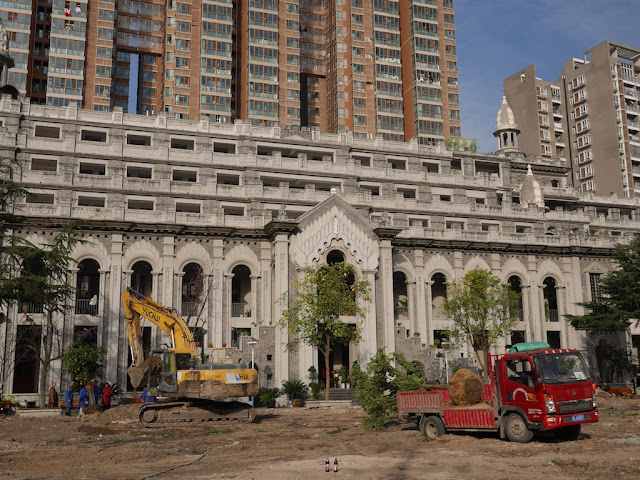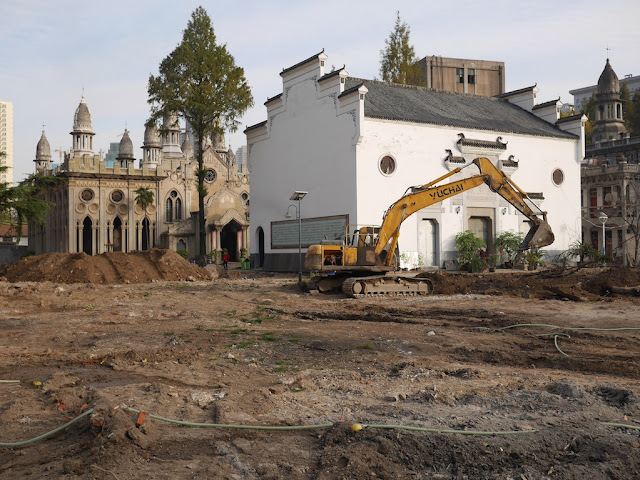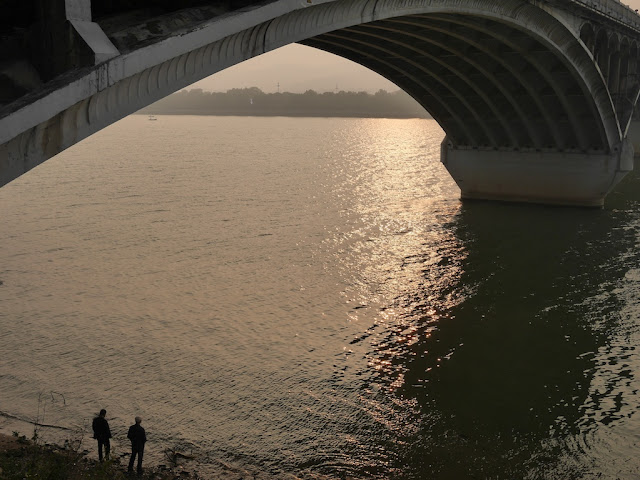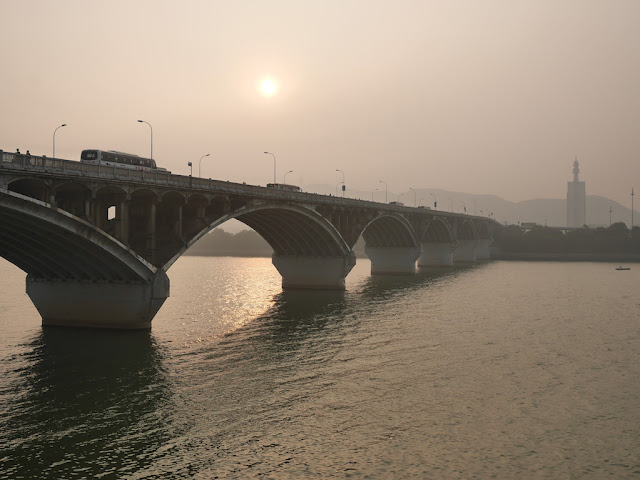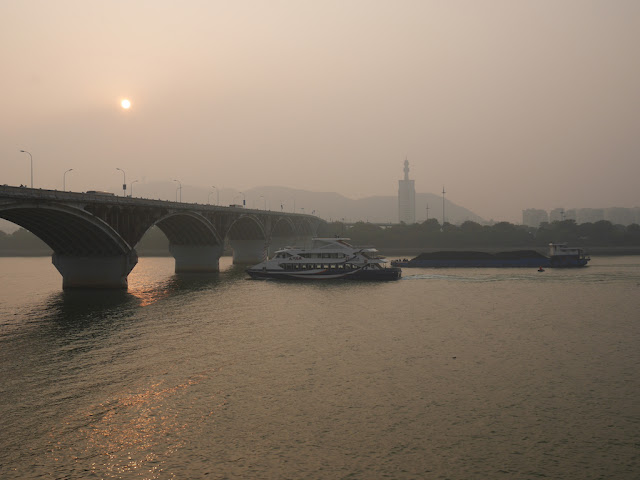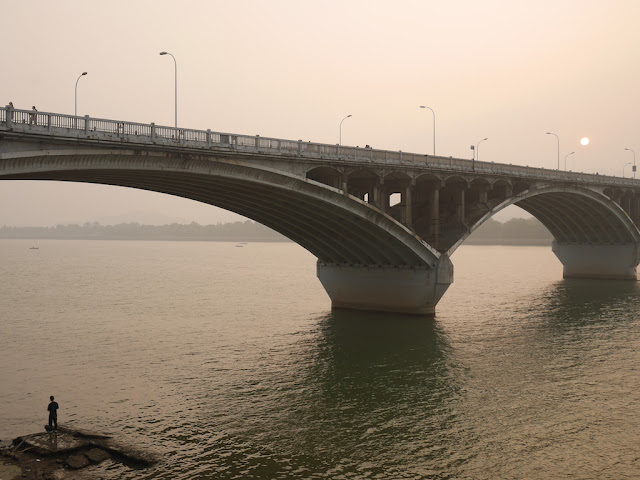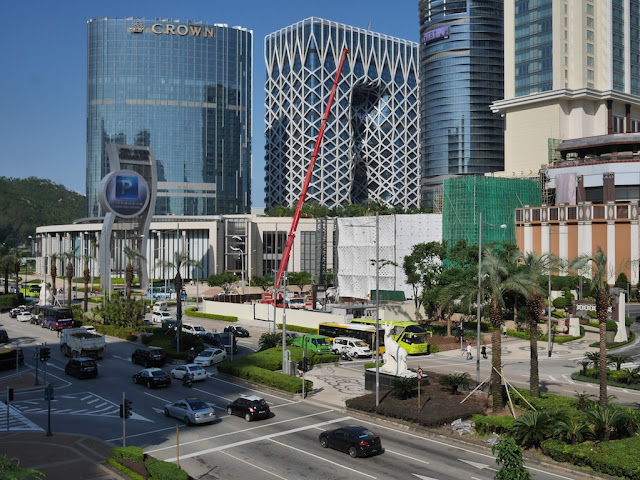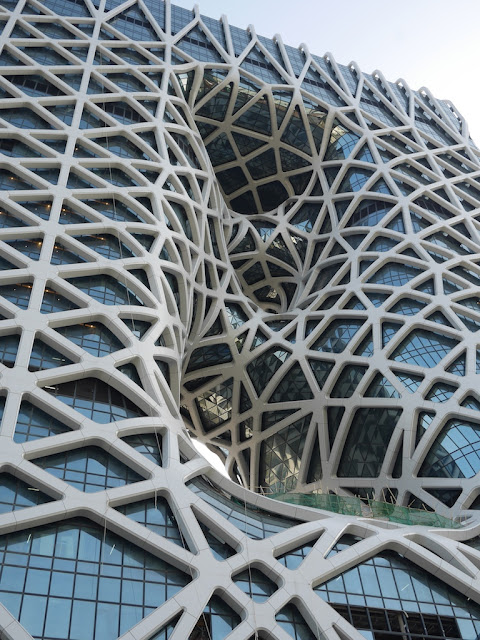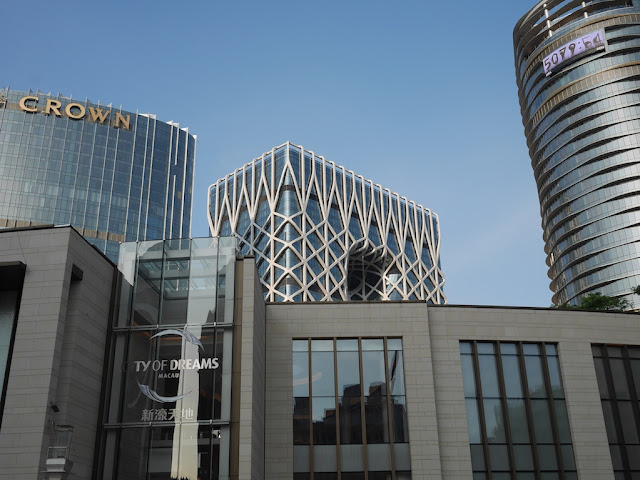The previous post, "The Two Towers of Guangzhou", featured a photo of two skyscrapers reaching into the clouds at night. The building on the left is the Guangzhou Chao Tai Fook (CTF) Finance Centre and the building on the right is the Guangzhou International Finance Center (IFC). They are sometimes referred to the East Tower and West Tower, respectively. The CTF Finance Centre is the taller of the two and is currently the third-tallest building in China and seventh-tallest in the world.
But the title for most iconic tower in Guangzhou probably wouldn't be awarded to either of these buildings and instead go to the Canton Tower. It isn't counted as a building, but it is even taller than CTF Finance Centre and is the fourth-tallest freestanding structure in the world.
I took the photo below of the Canton Tower shortly after the previously shared photo from a location just feet away. The scene was especially remarkable to me because the view was unusually clear thanks to genuinely good air quality.
I would say the big story related to these towers isn't their heights but closer to ground-level, including below it. A story of urban planning for another day . . .
But the title for most iconic tower in Guangzhou probably wouldn't be awarded to either of these buildings and instead go to the Canton Tower. It isn't counted as a building, but it is even taller than CTF Finance Centre and is the fourth-tallest freestanding structure in the world.
I took the photo below of the Canton Tower shortly after the previously shared photo from a location just feet away. The scene was especially remarkable to me because the view was unusually clear thanks to genuinely good air quality.
I would say the big story related to these towers isn't their heights but closer to ground-level, including below it. A story of urban planning for another day . . .

